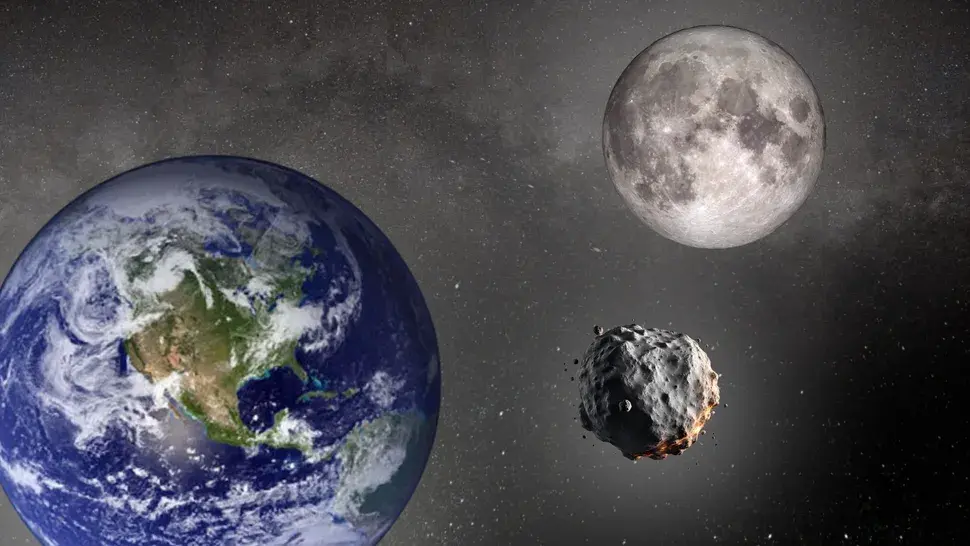Earth will acquire a second moon this month in the shape of the small asteroid 2024 PT5.
In contrast to the moon, which has been the principal companion of Earth for almost 4 billion years, this "new mini-moon" will only be here for a mere two months before returning to its original location inside the asteroid belt that circles the sun and trails Earth.
An interdisciplinary group of scientists with experience studying "mini-moon events" determined that the gravitational capture event was about to occur. They were frequently keeping an eye out for possibly fascinating behaviour in freshly discovered objects when they noticed the strange dynamic features of 2024 PT5.
"The object that is going to pay us a visit belongs to the Arjuna asteroid belt, a secondary asteroid belt made of space rocks that follow orbits very similar to that of Earth at an average distance to the sun of about 93 million miles (150 million kilometers), research lead author and Universidad Complutense de Madrid professor Carlos de la Fuente Marcos told Space.com. "Objects in the Arjuna asteroid belt are part of the near-Earth object population of asteroids and comets."
Marcos explained that some of these objects in the Arjuna asteroid belt can approach Earth at a close range of around 2.8 million miles (4.5 million km) and at low velocities of around 2,200 miles per hour (3,540 km/h).
"Under these conditions, the geocentric energy of the object may grow negative, and the object may become a temporary moon of Earth. This particular object will undergo this process starting next week and for about two months," he added. "It will not follow a full orbit around Earth.
"You may say that if a true satellite is like a customer buying goods inside a store, objects like 2024 PT5 are window shoppers."
Minimoon events are classified into two types. The first are extended periods of time that last one or more years, during which the asteroid completes one or more revolutions around our planet. Short engagements, in which the little body does not complete a full revolution, are the second category of episodes. These transient seizures may continue for a few days, weeks, or even months.
According to Marcos, an incoming body must approach Earth slowly—roughly 2,200 mph (3,540 km/h)—and at a near proximity of about 2.8 million miles (4.5 million km) in order to become a mini-moon.
"Under these conditions, the geocentric energy can become negative, and the object becomes temporarily bound to Earth," he continued. "So far, science has only identified two objects subjected to long captures, 2006 RH120 and 2020 CD3. There are three examples published of short captures: 1991 VG, 2022 NX1, and 2024 PT5. But there are several others unpublished."
Short mini-moon events like this forthcoming one, in which the small body (in this case an asteroid) acquires negative geocentric energy for weeks or a few months, are relatively frequent, with several events happening per decade. Long capture episodes, on the other hand, are rare, with Earth experiencing one around every ten or twenty years.
The cause of the ejection of these objects from around Earth are gravitational disturbances caused by the sun. Once 2024 PT5 has fulfilled its role as a mini-moon, it will return to a sun-centered orbit, remaining part of the Arjuna asteroid belt.
Unfortunately, during its occupation around Earth, 2024 PT5 won't be visible to the vast majority of skywatchers.
"The object is too small and dim for typical amateur telescopes and binoculars. However, the object is well within the brightness range of typical telescopes used by professional astronomers," Marcos said. "A telescope with a diameter of at least 30 inches plus a CCD or CMOS detector are needed to observe this object, a 30 inches telescope and a human eye behind it will not be enough."
He added that he and his colleagues intend to carry out spectroscopic and photometric observations of 2024 PT5 to better understand its nature.
The team's research is published in the journal The Research Notes of the AAS.




_1.jpg)



.svg)

